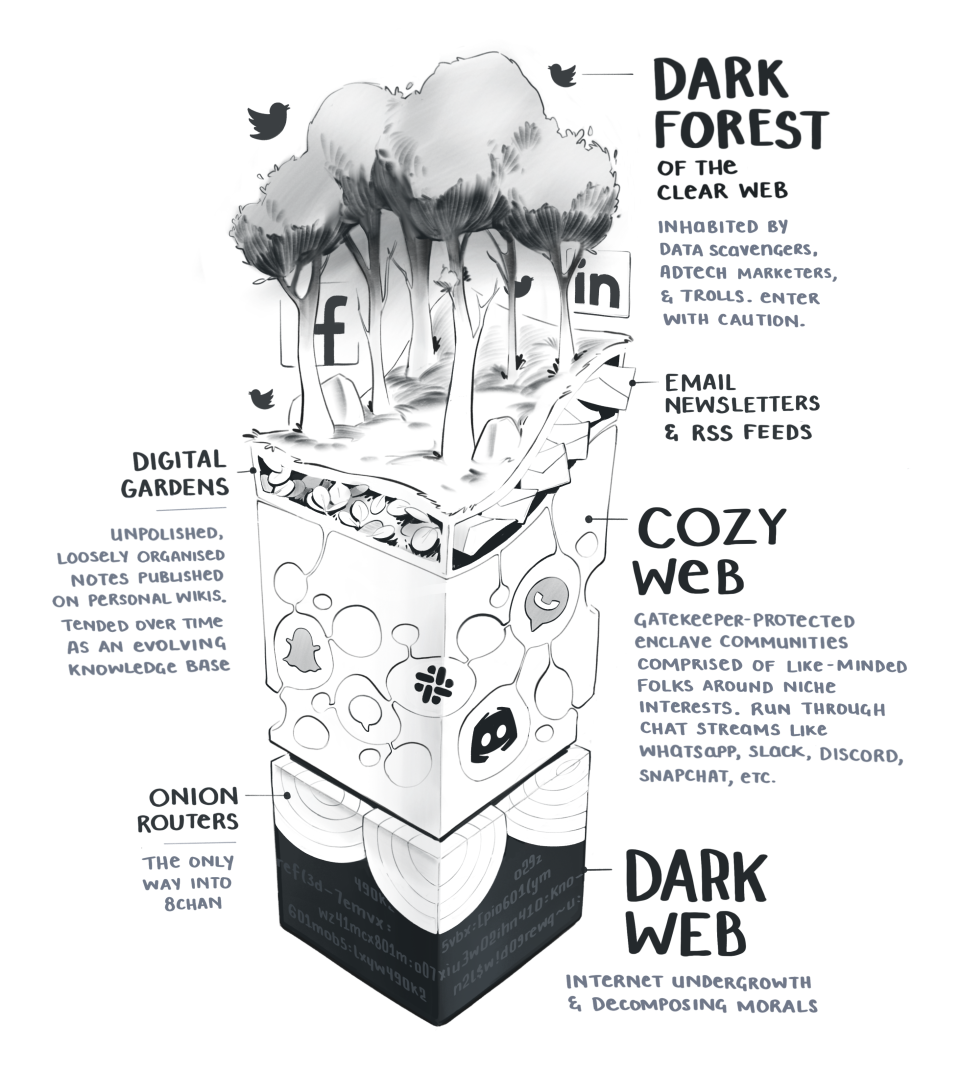The cozy web is Venkatesh Rao ’s term for the private, gatekeeper-bounded spaces of the internet we have all retreated to over the last few years.
It’s the “high-gatekeeping slum-like space comprising slacks, messaging apps, private groups, storage services like dropbox, and of course, email.” The informal, untracked, messily human space that the bots and algorithms haven’t infiltrated yet.
Venkat first proposed the term in one of his Breaking Smart emails on The Extended Internet Universe . He builds off Yancey Strickler’s companion idea of the Dark Forest theory of the web. The “dark forest” is a place that seems eerily quiet and devoid of life. All the living creatures within it are hiding. Because “night is when the predators come out. To survive, the animals stay silent.”
The predators here are the advertisers, tracking bots, clickbait creators, attention-hungry influencers, reply guys, and trolls. It’s unsafe to reveal yourself to them in any authentic way. So we retreat into private spaces. We hide in the cozy web.
“These are all spaces where depressurized conversation is possible because of their non-indexed, non-optimized, and non-gamified environments”
Yancey Strickler – The Dark Forest Theory of the Internet
Loving both of these notions, I felt compelled to bring them together into an illustrated diagram of our current social internet situation.

We create tiny underground burrows of Slack channels, Whatsapp groups, Discord chats, and Telegram streams that offer shelter and respite from the aggressively public nature of Facebook, Twitter, and every recruiter looking to connect on LinkedIn.
It’s the digital realm of Domestic Cozy Gen-Z vibes. Casual, comfy, and not trying to kick up a fuss.
The cozy web works on “(human) protocol of everybody cutting-and-pasting bits of text, images, URLs, and screenshots across live streams”, hopefully one day evolving “from cut-and-paste to a personal blockchain of context-permissioned, addressable, searchable, interlinked clips” as Venkat puts it.
It’s since become a standard part of the Venkat Vocabulary for fellow Ribbonfarmers and Yaks, and remains one of my favourite Neologisms Neologisms
A collection of interesting words that have recently been coined of this year.